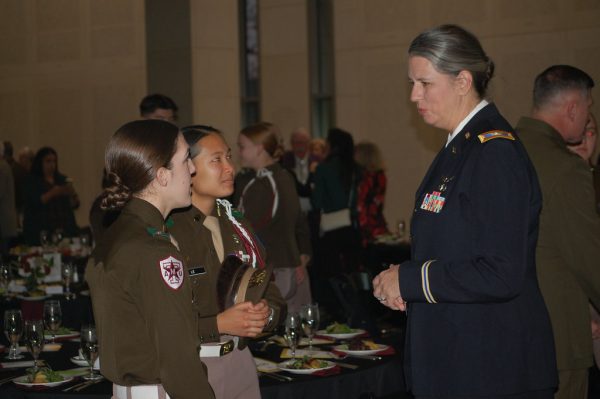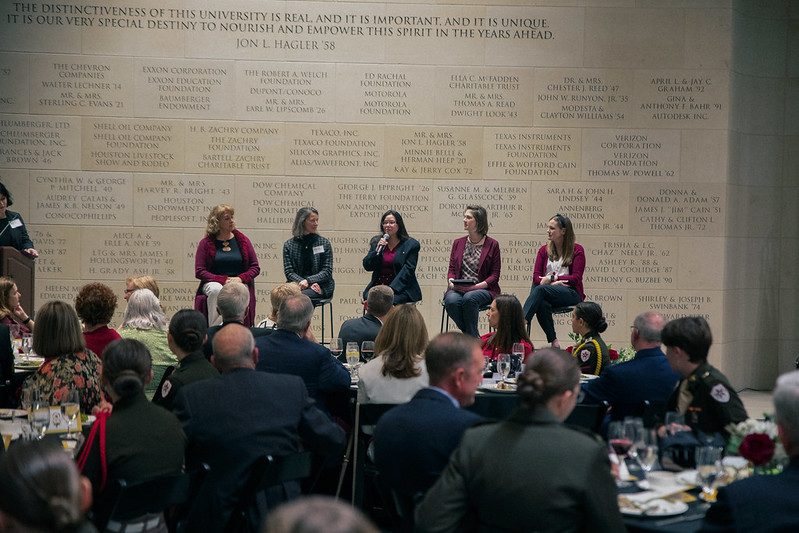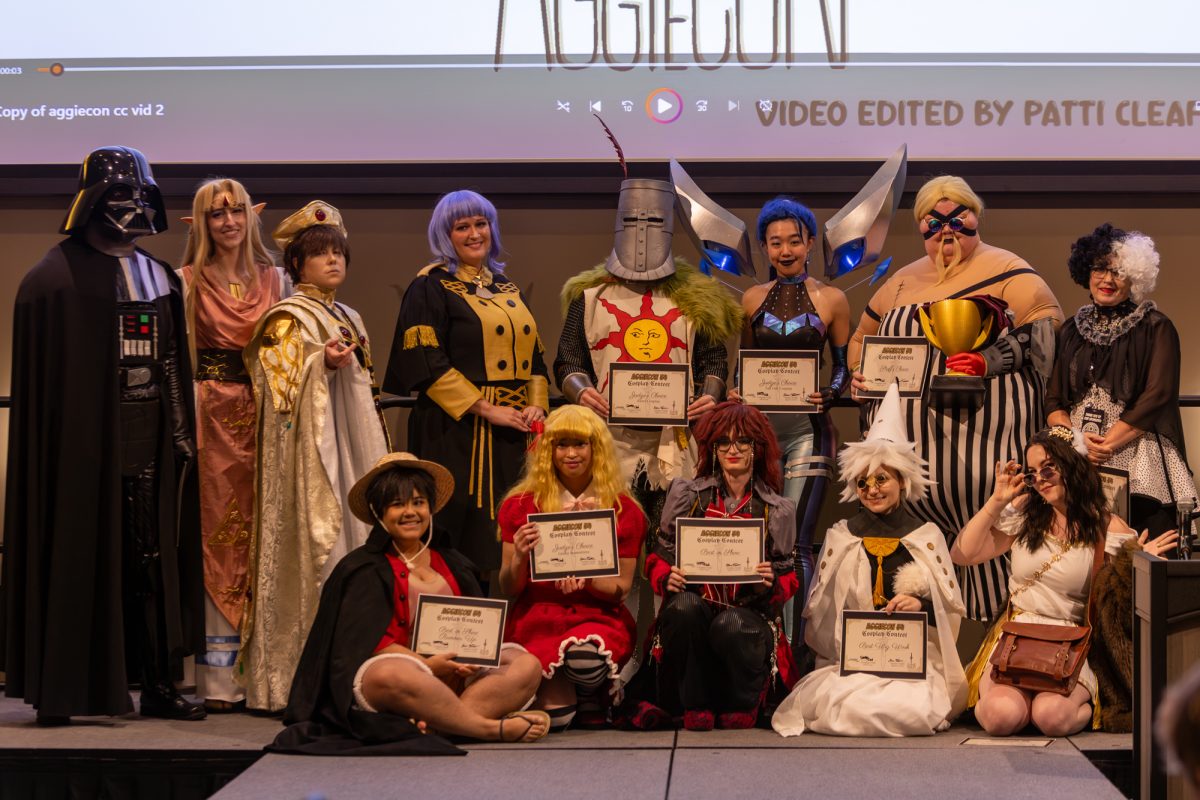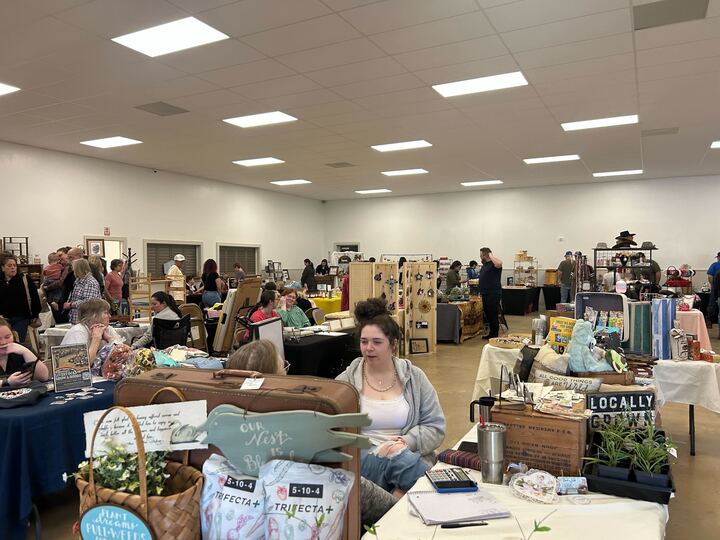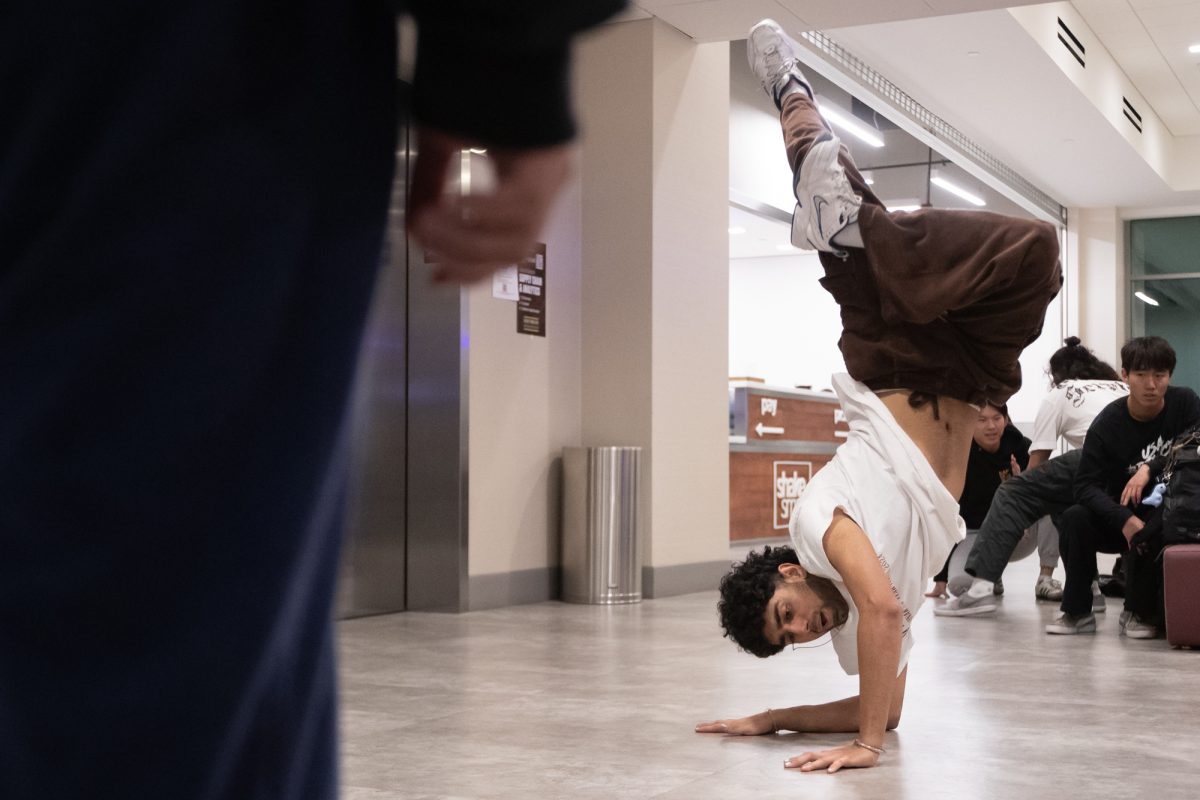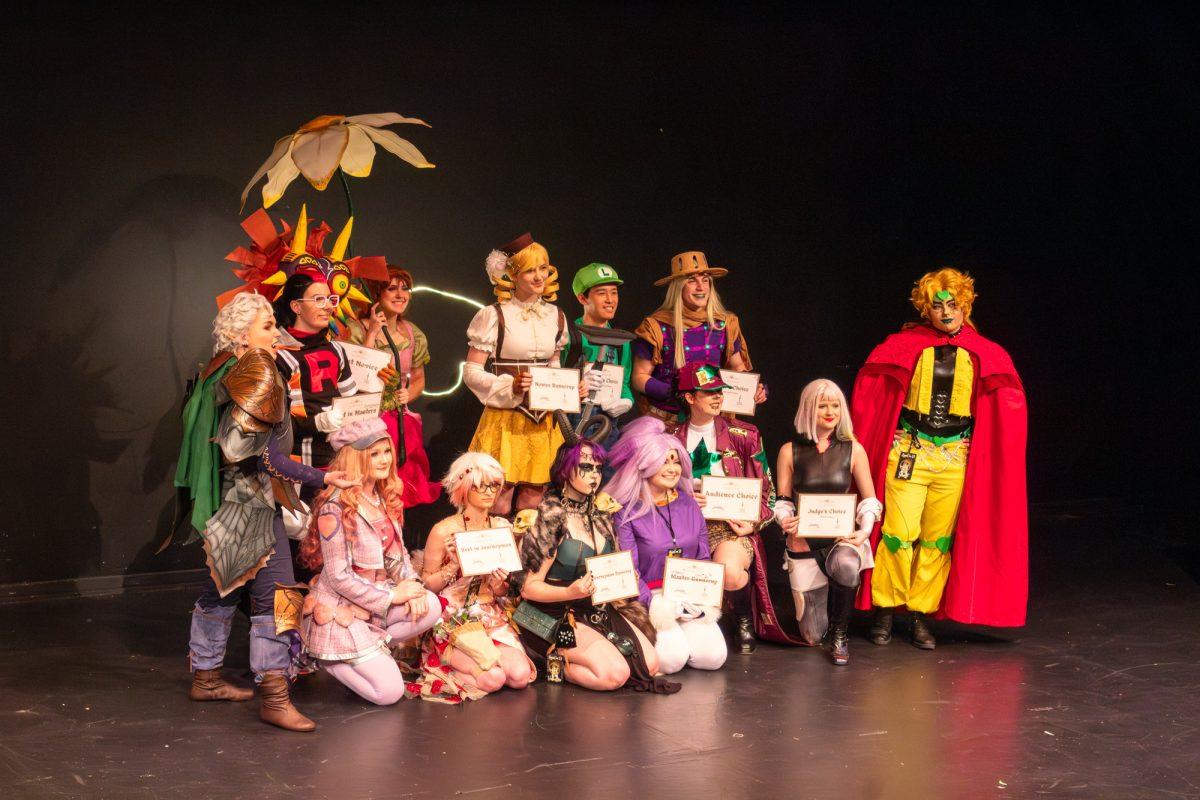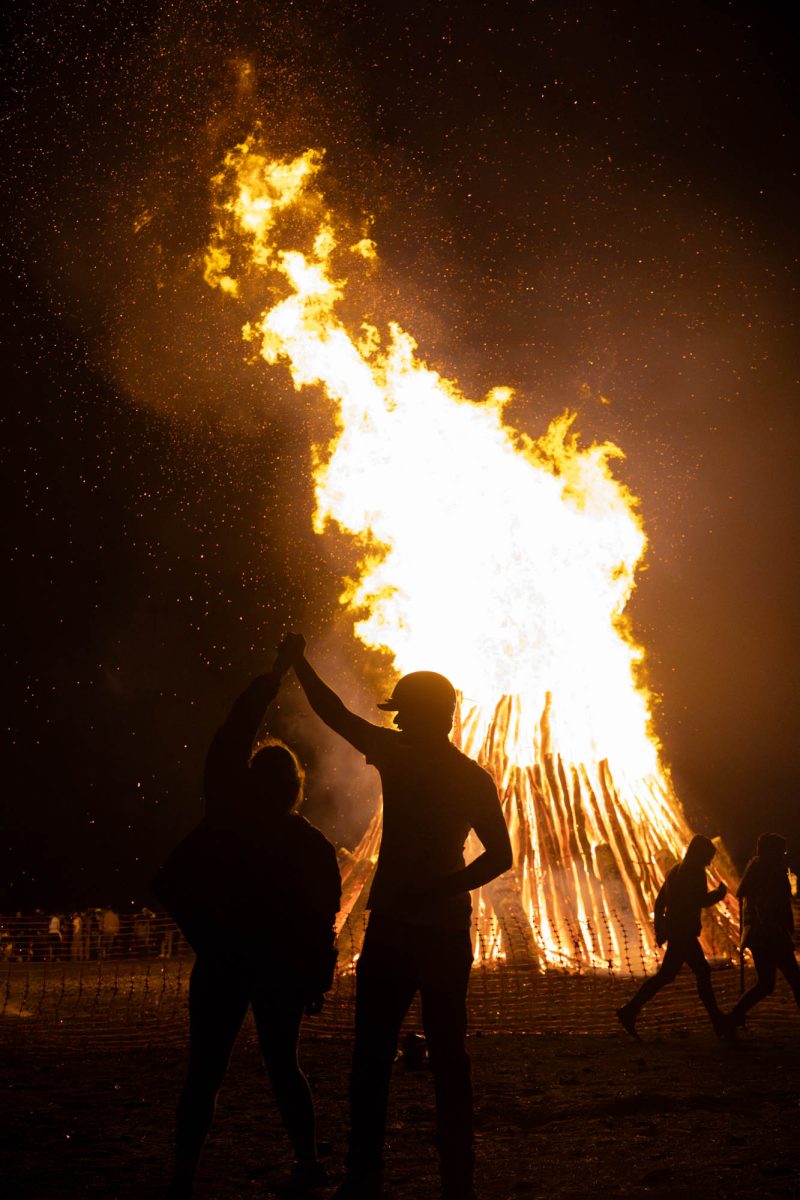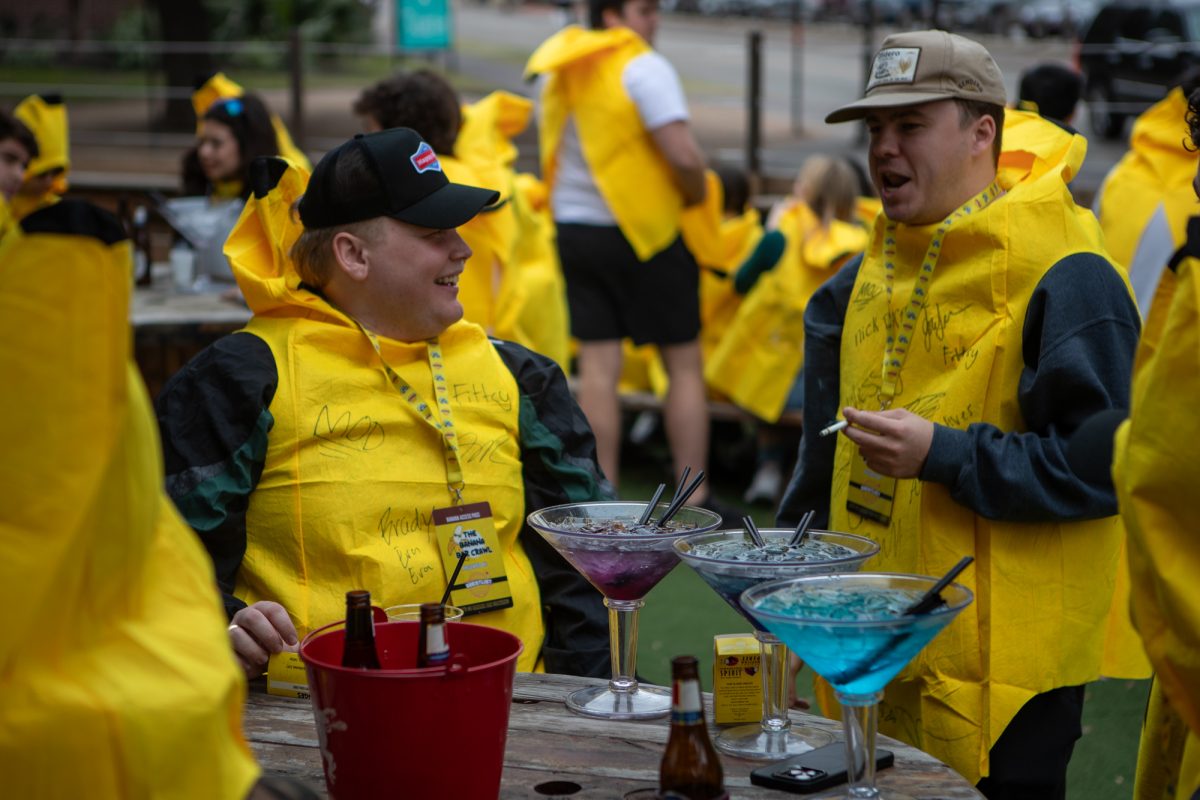The banquet room was steeped in over half a century of tradition and courage, as both current and former cadets gathered to celebrate the legacy of the women before them.
The Corps Women’s 50th Celebration Dinner, an event organized by the Corps of Cadets Association, was hosted to commemorate the brave women — past and present — who fight to make the Corps a welcoming space.
Originally an exclusively male organization, women were only partly integrated into the corps in 1975, as the first all-female outfits — W-1 and Squadron 14 — were established. Ten years later, integration continued when women began joining all-male outfits. Today, there are 419 women in the Corps, eight of whom command outfits.
Many of those in attendance witnessed the beginnings of female integration in 1975. Among them was Lieutenant General Lloyd S. “Chip” Utterback ‘75, the Corps’ interim commandant.
“This celebration is personal to me because I was there 50 years ago,” Utterback said. “The first women in the Corps stood on the quad my senior year, and I witnessed history.”
In addition to a full-course meal and snapshots with Reveille X, attendees listened to panels featuring the diverse stories of cadets’ experiences throughout the history of female integration.
Veronica Cruz Cowher ‘92, who formed a part of Squadron 14, recalled her time during the Corps as a time of resilience and perseverance in the face of discrimination, as she, alongside the other women in her outfit, stood together to create change.
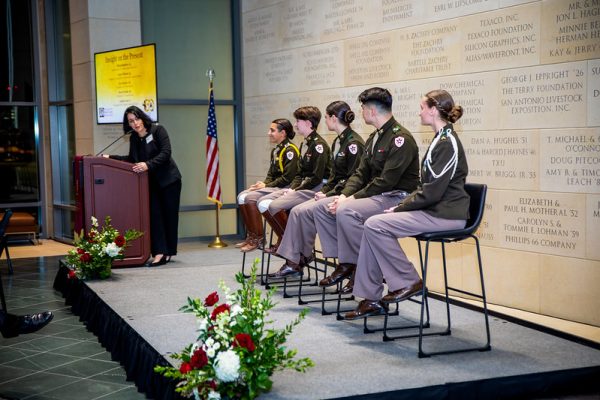
“We were breaking barriers, removing barriers of information and just becoming closer with one another,” Cowher said.
Despite the harsh treatment women received during integration in the 90s, former cadets emphasized rising above and continuing to have compassion, despite the challenges they faced.
“How you lead and leading with kindness is important,” Autumn Leveridge ‘98, who was part of the Aggie Band and Brigade Staff during her time in Aggieland, said.
Leveridge noted the value of women as leaders, as they enable conversations from multiple perspectives and ensure that future leaders have the skills necessary to operate in an integrated workforce. She said cadets are more prepared by forming parts of an integrated outfit.
Many of the women who served in the Corps during the early 2000s spoke of the drastic changes since the 90s, saying how, although imperfect, the environment was much more welcoming.
“[When I came to A&M], integration was really not on my mind,” Abby Williford ‘06, a former B-Battery in the Aggie Band, said. “I had female upperclassmen in my outfit and across the band. I would walk down the quad and see women in boots. It was definitely not on our minds that we were taking this bold move forward. And I think it is because of all the things [the women before us] had done.”
This sentiment was echoed by current cadets, who said they feel included and celebrated in their outfits.
“I have always felt very supported in the Corps,” biomedical sciences senior Olivia Baptiste, the current commanding officer of Parsons Mounted Cavalry, said. “I’ve had incredible men within the Corps of Cadets who have been mentors and incredible women … who have always supported me and inspired me.”
Baptiste found the stories former cadets shared to be inspiring and expressed gratitude for the efforts of the men and women who made the opportunities for women today possible.
University studies senior Grace Wilson said that although some members are still not receptive to integration, they are greatly outnumbered by those who support her and her fellow cadets.
“There are some people in outfits where they aren’t as accepting, and there are those outliers you have to get over to your side,” Wilson said. “But I’m very grateful for those that paved the way so that I can be where I am.”
While focused on celebrating the achievement, many in attendance noted the importance of unity between men and women to create change and how they are more powerful together than apart.
“Authentic men have such qualities and beautiful gifts that help lead women, and women have such beautiful qualities to help lead men,” Baptiste said. “So together we get to take on the uniqueness of ourselves and build each other up.”
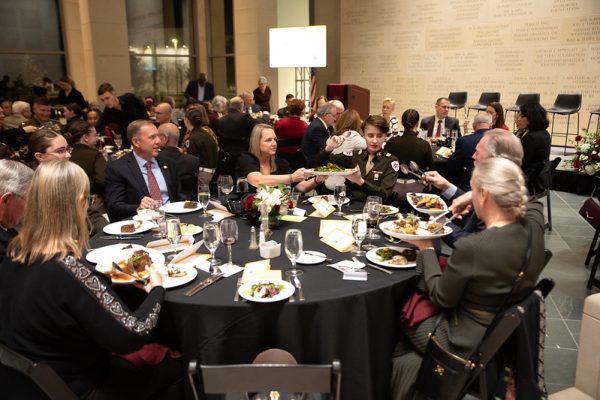
Biochemistry junior Tandi Ford amplified the value of integration as well.
“Integration and connection with each other starts when people become trusting of each other, and integration will become apparent when men also put forth that step to be accepting,” Ford said. “I’ve seen tremendous growth from my outfits and my seniors now encourage me to grow.”
The dinner was attended by President Mark A. Welsh III, who expressed his immense pride in the progress that has been made toward full integration and said they were nowhere near finished.
“We’ve come a long way, but this journey is not even close to over,” Welsh said. “The Corps of Cadets at Texas A&M should be a shining example of a leadership program for everyone … It should be held up at the soul of Texas A&M because that’s what the Corps is. It ought to be the best of everything. It ought to have the best of everything. It should be represented by the best cadets we can find, men or women.”
The sentiment was shared by Utterback, who recalled a phrase written by Charles Dickens to memorialize the occasion: “It was the best of times, it was the worst of times, it was the age of wisdom and it was the age of foolishness.”
“It’s been 50 years,” Utterback said. “ … and I am extremely happy to report … that there are cadets, male and female, who are focused, they’re motivated, they’re proud and they’re making it happen, every single day.”
Thanking everyone in attendance, Welsh ended the event by highlighting the importance of equal opportunity and how cadets will remember these moments as pillar stones of their development as exceptional leaders. He extended his gratitude to those who paved the way for the opportunities currently extended to all cadets, men and women alike.
“It is an honor to be here with you,” Welsh said. “Fifty years of anything is wonderful. Fifty years of women in the Corps is exceptional.”
